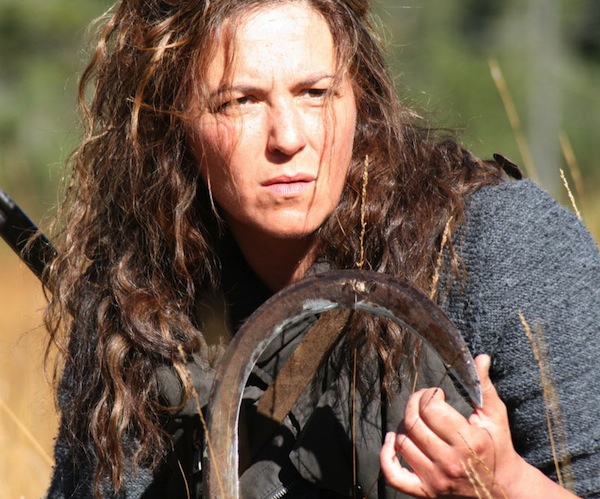Film Review: Hitting Up Against “The Wall”
I guess that’s the point. We all need to slow down, go back into nature, appreciate animal life, take long walks in the forest and in the mountains. We all need a wall to cut us off for a while. And so on….
The Wall (Die Wand), directed by Julian Roman Pölsler. At the Museum of Fine Arts, Boston, MA, through September 27th.
By Gerald Peary
I haven’t read Marlen Haushofer’s well-received 1962 Austrian novel, The Wall; but I’ve certainly heard it, or heard most of it, as the virtually non-stop voiceover for the 2013 film adaptation from director Julian Roman Pölsler. Has any movie ever had so much gab as the soundtrack? This audio barrage for the American release comes in German-accented English, every confession, every revelation, every philosophical tidbit of the movie’s tormented female protagonist.
Much of the voice-over is repetitive, badly in need of editing, but it’s also cheap and obvious thinking. Are these really the sentiments of a distinguished author? Perhaps a fault lies with the translator hired for the exported version of The Wall, who has provided a soupy rendition of Haushofer’s supposedly first-rate prose.
Or maybe this heavily symbolic post-Kafka story has wilted over the decades since The Wall was first published, the 1960s, when Herman Hesse’s Steppenwolf and Siddhartha ruled college dormitories. Maybe Haushofer’s tale is kind of stale? In the film version, a Nameless Woman (what else?) travels with two elder married friends into the northern Austrian countryside. They stop at a hunting lodge for the night. The friends go into town for dinner, but don’t return. The next day, the Nameless Woman (The Lives of Others’ Martina Gedeck) tries to walk toward the city to find them, but bumps into an invisible wall, like a mammoth window pane, stretching across the road. She walks toward a house, with two people in the front yard, but another invisible wall keeps her from getting to them, or communicating with them. The stunned Nameless Woman returns to the hunting lodge, and waits and waits, and no human being appears.
And what of the two she saw, her neighbors? She peers through binoculars and sees them frozen in time, doing exactly what they were doing when she was on their property. The old man is drawing water from a well. The old woman sits staring on her porch. Two ghosts? Two dead people? Is everyone deceased? In the village? In the world?
The Nameless Woman must make a life for herself in isolation and solitude. Kind of like old Robinson Crusoe, she hunts and plants and hangs out with her dog, and goes through every mood from anger to mourning to near-suicide to acceptance to elation. And I guess that’s the point. We all need to slow down, go back into nature, appreciate animal life, take long walks in the forest and in the mountains. We all need a wall to cut us off for a while. And so on….
Stop me if you’ve heard all the above. If you see The Wall, you’ll hear it again and again, and earnestly, as if nobody but the Nameless Woman has made these spiritual discoveries. At some point watching The Wall, I tuned out on the oppressive narration and concentrated on the scenery. It’s pretty astonishing, the Austrian Alps. If that’s not ample pleasure, there’s a fine dog to watch and a couple of spry cats.
Gerald Peary is a professor at Suffolk University, Boston, curator of the Boston University Cinematheque, and the general editor of the “Conversations with Filmmakers” series from the University Press of Mississippi. A critic for the late Boston Phoenix, he is the author of 9 books on cinema, writer-director of the documentary For the Love of Movies: the Story of American Film Criticism, and a featured actor in the 2013 independent narrative Computer Chess.

